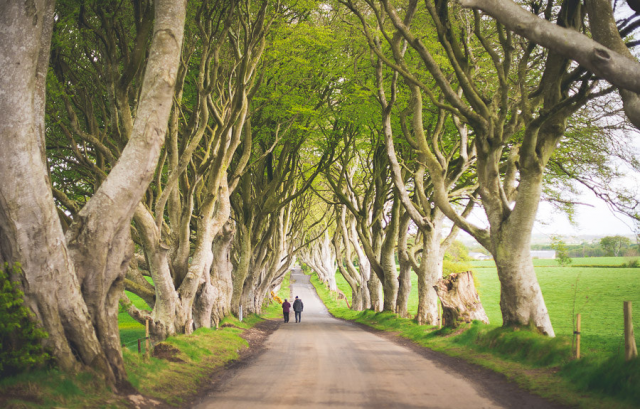Despite the absence of a centralised tourism strategy, the sector makes a significant contribution to the Northern Ireland economy and has exceeded targets set out in the previous Programme for Government.

Tourism Performance
According to Deloitte, in 2014 Northern Ireland’s tourism industry contributed 5.2% to the region’s GDP and supported 43,300 jobs (equivalent to one in every 18 jobs).
The Northern Ireland Executive’s long-term vision for tourism is to develop an industry valued at £1 billion by 2020. Both the Programme for Government 2011-2015 (PfG) and the Northern Ireland Economic Strategy contain the interim target of increasing visitor numbers to 4.2m and revenue to £676m by December 2014.
At the end of 2014, the latest full-year for which data is available, visitors to Northern Ireland numbered 4.5m and had a combined spend of £751m – exceeding the interim target.
Examining visitor numbers more closely shows Northern Ireland’s largest tourism market to be domestic tourism, representing 52% of total visitors in 2014. In the same year, visitors from the Republic of Ireland represented 9% of total visitors, GB visitors represented 26% and visitors from outside the UK and the Republic of Ireland represented 14%.
Tourism expenditure presents a different picture. In 2014, visitors from GB spent £257m or 34% of total tourism expenditure. Domestic visitors spent £238m, approximately 32% of total tourism expenditure. Tourists from outside the UK and the Republic of Ireland spent £189m, or 25% of total expenditure, whilst tourists from the Republic of Ireland spent £68m, or 9% of total expenditure.
Interestingly, when these expenditure figures are examined on a per-visitor basis, tourists from outside the UK and the Republic of Ireland are the highest spenders – spending £307 per visitor, compared to £219 per GB visitor, £174 per Republic of Ireland visitor and £102 per domestic visitor.
The Hunter Review
2014’s independent Review of the Northern Ireland Tourist Board and Wider Structures (the Hunter Review) sought to ensure,
…current [tourism] organisational structures are the optimum necessary to deliver the targets set out in the Economic Strategy and the Programme for Government and are effectively aligned with the work of Invest NI.
The report made 33 recommendations, all of which were accepted by the Department of Enterprise, Trade and Investment (DETI), including: the rebranding of the Northern Ireland Tourist Board (NITB) to Tourism Northern Ireland; closer working between Tourism Northern Ireland and Invest Northern Ireland; a review of the skills needs of the tourism industry; and a deepening of collaboration with Tourism Ireland and the new local councils.
The Hunter Review’s key recommendation was that the Northern Ireland Executive develop an overarching tourism strategy. Over the last Assembly mandate tourism developed without a central strategy. A draft strategy was published and consulted on during 2010, but it did not receive Executive approval. The Hunter Review notes that the absence of a strategic plan did not prevent progress and development in tourism infrastructure, including five Signature Projects. Visitor numbers also increased over this period, prompting the question: does Northern Ireland need an Executive-wide tourism strategy?
Conversely, the review also states that the absence of a strategy has inhibited: ‘…the development of those collaborative partnerships across the industry, in government and beyond, which are the building blocks for future progress’. It notes too, that having no over-arching plan has ‘caused a degree of confusion within the industry over the respective roles of the Department and the NITB’.
Strategy Development
DETI has embarked on the development of a new tourism strategy. During February 2016, regional stakeholder consultation events took place throughout Northern Ireland. These events will be used to inform the draft strategy due for publication and consultation in summer 2016.
Development of this strategy will be taken forward by the new Department for the Economy and is likely to be an important topic from the outset of the next Assembly mandate. The overarching theme of this strategy will be ‘internationalising’ the Northern Ireland tourism product. Key policy areas to be addressed by the strategy include:
- Growing the events and business tourism marketing;
- Creating visitor experiences;
- Developing Northern Ireland’s tourism skills;
- Defining and developing the role of government and industry; and
- Developing Northern Ireland’s digital tourism experience.

